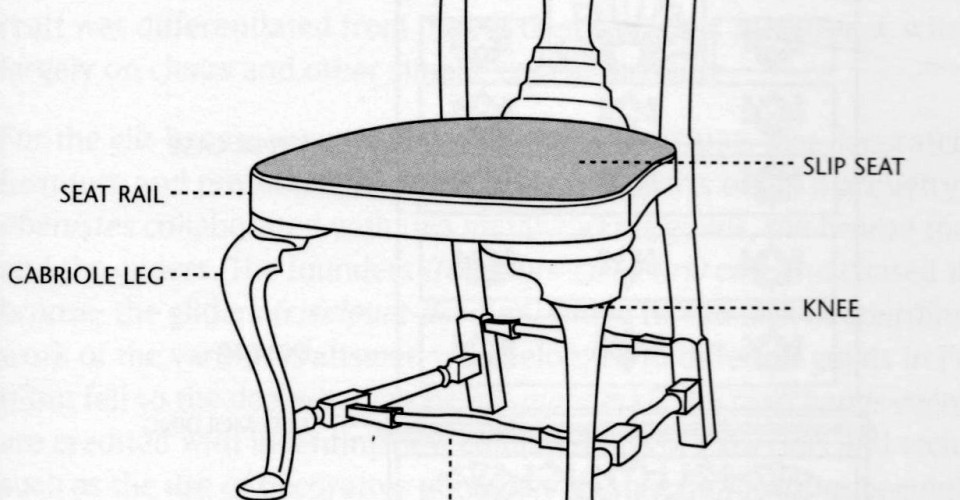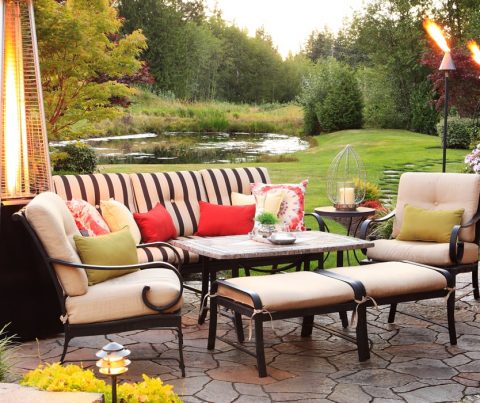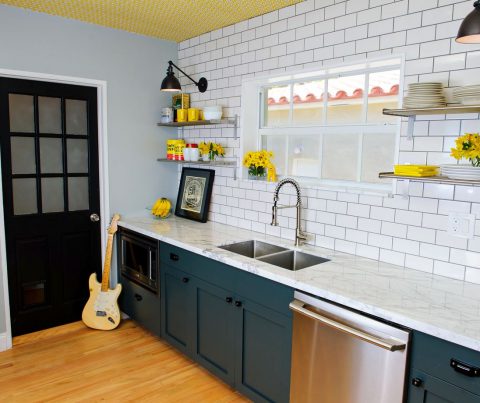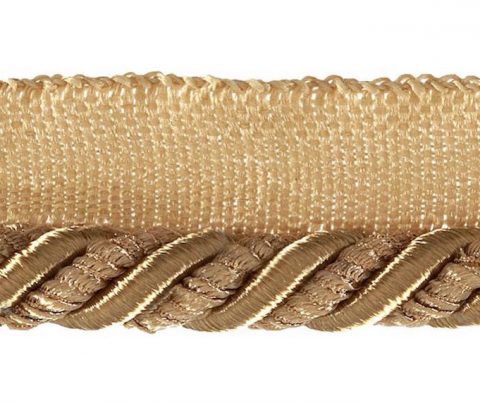Design Dictionary is a new feature that defines common (and occasionally very uncommon) terms used in interior design, architecture, and home improvement.
In my senior year of college, I signed up for an interior architecture class that was supposed to cover, well, interior architecture. Instead, the semester focused entirely on chairs. By the time finals rolled around, we hadn’t even hit the mid-century era. Here’s what I know about interior design’s favorite object: the chair.
A Brief History of Chairs
Before there were chairs, people sat on chests, stools, and benches. These forms of seating continued to be popular well after more formal seating options were available, because chairs were reserved for the powerful and very wealthy. Chairs were ornate and detailed, signifying authority (even after the average person would be allowed to have their own chair – around the 17th-century – the wealthy would still distinguish their status through fancier versions).
This very fancy chair (pictured below) dates back to 1625, and was made in England. A similar version was depicted in a portrait of a countess.
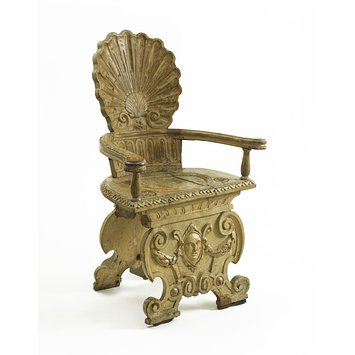
Even Pilgrims reflected rank through chair design. This one, which was made in the 17th century, is thought to have belonged to Governor William Bradford, governor of Plymouth. Note the turned spindles and wooden seat.

With their simple yet elegant spindle backs, Windsor chairs were a fixture in English homes by the 18th century, and in American homes by the end of the century. This is a two-seater version of the iconic chair.
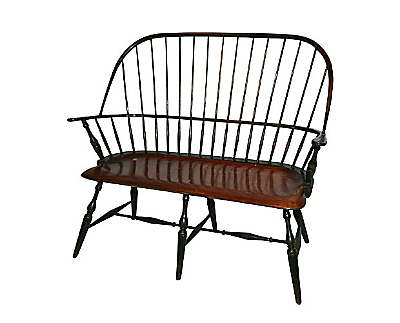 Like other furnishings, chairs became affordable to average people thanks to mass production. In 1859, the Thonet No. 14 debuted. It was cheap to produce and ship, since the chair came to the buyer as a kit. By 1930, fifty million Thonet chairs were in use around the world. In a way, the DIY spirit of the Thonet chair paved the way for the flat-pack, assembly-required furniture of IKEA that became popular several decades later.
Like other furnishings, chairs became affordable to average people thanks to mass production. In 1859, the Thonet No. 14 debuted. It was cheap to produce and ship, since the chair came to the buyer as a kit. By 1930, fifty million Thonet chairs were in use around the world. In a way, the DIY spirit of the Thonet chair paved the way for the flat-pack, assembly-required furniture of IKEA that became popular several decades later.
What’s In a Chair?
While chairs evolved in incredibly diverse ways over the next century, you can find some commonalities between the ones in your home today, and earlier designs. The terminology of the different components of a chair hasn’t changed much. Here’s a handy diagram that reveals the anatomy of a chair—in this case, a Queen Anne-style design.
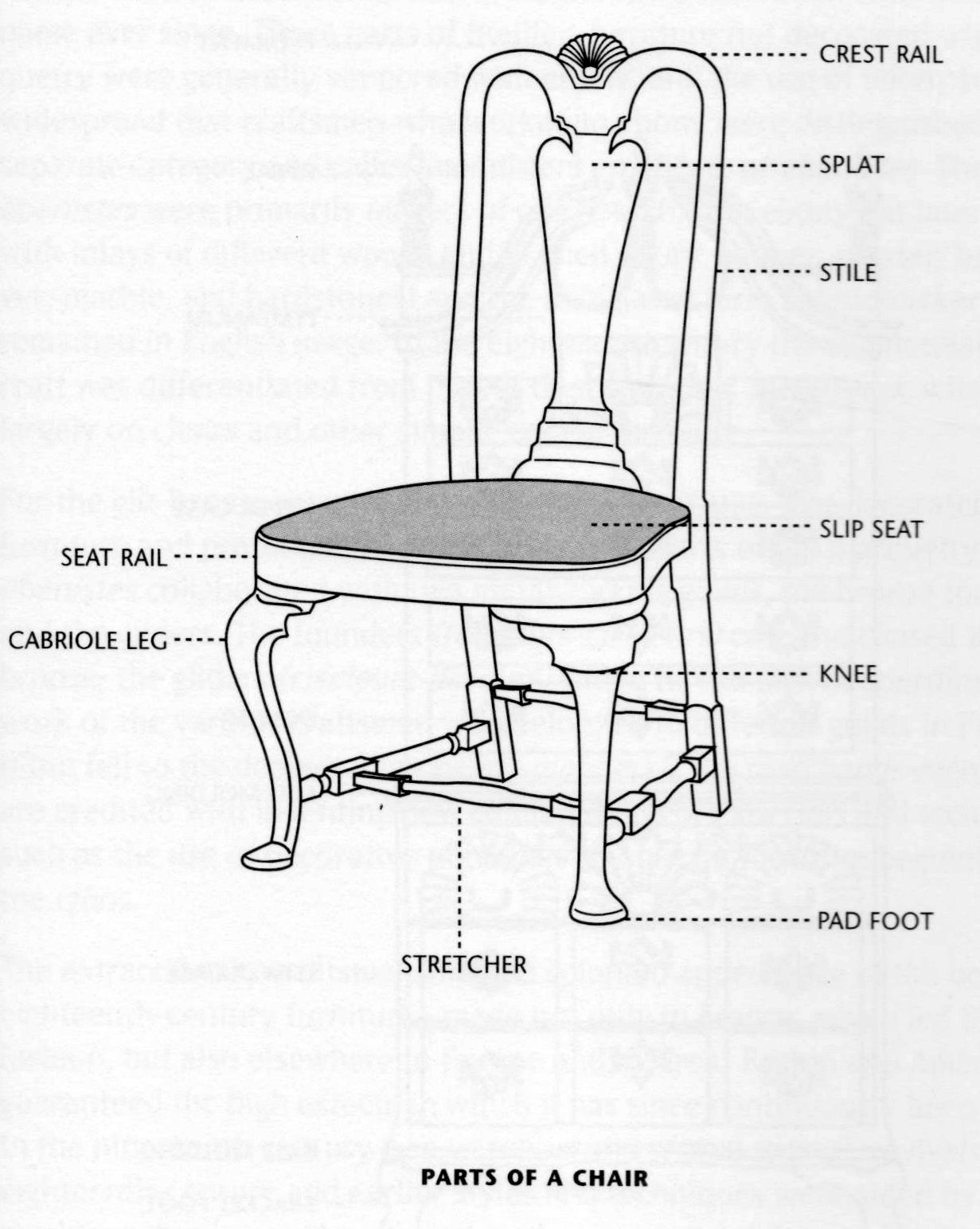
Crest Rail: The very top of the chair, where there is often ornamental carvings or flourishes.
Stile: The vertical part of the chair back.
Splat: The middle of the back of the chair, which adds back support.
Slip seat: The removable, upholstered chair seat.
Seat rail: Also known as the “apron,” this is the section of the chair that connects the seat to the legs.
Knee: The bent part of the leg.
Cabriole leg: A specific type of leg, defined by a curve.
Stretcher: The wood spindles, slats or strips that connect between the legs, bringing additional support to the chair.
Pad foot: One of the more basic types of feet, the pad foot has a soft curve and is often paired with the cabriole leg.
Of course, this dictionary isn’t exhaustive—there are dozens upon dozens more terms referring to the specific parts of a chair. To see an incredible list of them, visit Eric Hart’s Prop Agenda. And the next time you’re at an estate sale, don’t pass up a Thonet chair if you see one!
Did you love this post? Read the rest of the series!
